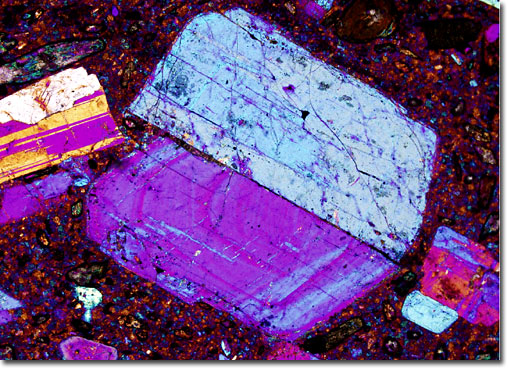|
In magma form, dacite is extremely viscous, hindering it from moving very far away from its point of eruption before it cools and solidifies. The substance is, therefore, highly involved in the creation of thick volcanic domes. Dacite, which typically erupts at temperatures that range between 800 and 1000 degrees Celsius, is also one of the rocks most commonly associated with the large volcanic explosions called Plinian eruptions. Named for Pliny the Younger, who in 79 AD recorded the catastrophic effects of the Vesuvius eruption, Plinian eruptions are characterized by the large quantities of solid particles (tephra) and gas they exude high into the stratosphere.
|
